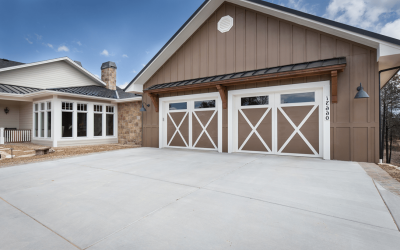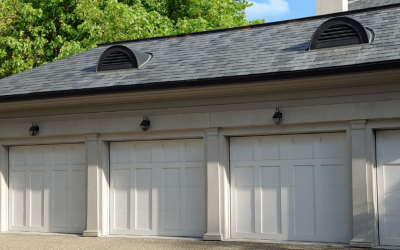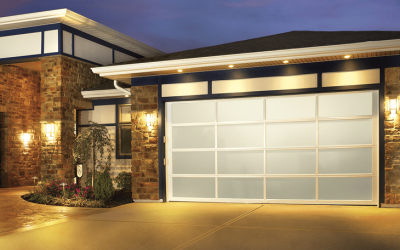Many garage door owners inquire about the proper way to replace the cones at each end of the door’s torsion springs. This can be a difficult and challenging process. Newcomers may spend as long as two hours trying to handle the job.
The simplest way to deal with the issue is to purchase torsion springs that have the cones installed rather than springs without cones installed. Springs with the cones pre-installed are $10 more than springs that do not have cones installed already. If you want to install them yourself, you can use that extra $10 toward springs with longer lives or saved for future garage door needs.
If you want to install them yourself, you can follow these steps and get the job done properly. The winding cone is located at one end of the spring. A stationary cone is at the opposite end. Start with the stationary cone.
Take the nuts and bolts from the spring anchor bracket and install them in the stationary cone.
Using a vise, grip both nuts tightly. The next step is extremely critical regarding the spring removal from the cone. The spring wire end should be hooked with a pipe wrench or by using large channel locks. The wrench should be turned to the point when the spring comes off of the cone.
In the event you do not have a vise available, you can do the job by positioning the spring on the floor and putting a bar in between the bolts. Each end of the spring wire can be hooked with the pipe wrench, then you just lift the winding bar as you push down on the wrench end. This process can be repeated until the cone loosens.
The winding cone can be removed by securing it in a vise, the the wire end must be hooked. Next, you turn the wire off the cone following the same procedure. In the event a vise isn’t available, the same steps can be followed as mentioned previously.
The main difference is that the bar will have to be inserted into the winding cone.
After the winding cones have been removed, any old oil on the cones should be removed before the new springs are installed. The cones in the springs should now be reinstalled. While this step could be done using a vise, it is easier to do with the cones and springs on the shaft.
To handle the installation, use your hand to turn each spring onto the cone. The fourth, fifth, sixth and seventh coils should be gripped from each each end using large channel locks or a pipe wrench. This will require you to make adjustments to the pipe wrench a couple of times so you can get an accurate grip on the spring.
Using your thumb, press the spring down into the jaws of the wrench. Rest the wrench’s other end on the door’s top. Using a winding bar, pull the winding cone down. The bar should be reinserted and the winding cone should be pulled down on until the cone is all the way in the spring’s end.
Because the majority of cones have dual threading, it is essential to make sure that the spring wire is set to the proper grooves on each of the cones.
This aspect can be challenging with the wire that is smaller, such as the .207, the .218 and even the .225 wire. The end of the wire may have to be tapped into the correct groove on the spring cone.
Now grip the fourth, fifth, sixth and seventh coils from the stationary ends, using a pipe wrench. Pull down, using the pipe wrench, then carefully turn each spring correctly onto the cones. Any spring anchor bolts should be untightened as needed so the coils can be enabled to wind properly onto the cones.
If you are faced with a spring that won’t wind onto the cone as you pull down on the wrench, the problem is most likely the result of springs being on the incorrect side of the center bracket. You need to correct this by putting the springs on the right side of the center bracket.










